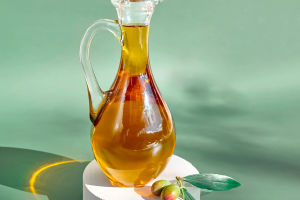Hey Lykkers! Are you dreaming of biting into fresh, juicy pears grown right in your own backyard?
With a bit of care and attention, you can easily cultivate your very own pear trees!
Here's a beginner's guide to growing pear trees that'll help you add a touch of sweetness to your home garden.
1. Choosing the Right Pear Tree
The first step to successfully growing pears is selecting the right tree for your garden. There are two primary types of pear trees: European (like Bartlett and D'Anjou) and Asian (such as Hosui and Shinko). European pears are the classic, bell-shaped varieties you see in grocery stores, while Asian pears have a rounder shape and a crisp texture, almost like apples.
Consider your climate when picking a tree. European pears thrive in temperate climates, while Asian pears are more tolerant of warm and humid conditions. Make sure to pick a variety that suits your area's growing conditions.
2. Planting Your Pear Tree
Once you've selected the perfect tree, it's time to plant it! Choose a sunny spot in your garden with well-drained soil. Pear trees need full sun exposure—around 6-8 hours a day—to grow healthy and produce sweet fruits.
Plant your tree in the early spring or late winter when the ground is still cool. Dig a hole twice as wide as the root ball but no deeper to allow the roots to spread comfortably. Place the tree in the hole, backfill it with soil, and gently firm it down. Water thoroughly to settle the roots.
3. Caring for Your Tree
Young pear trees require a little pampering to get established. Water your tree deeply once a week, especially during dry spells. Mulch around the base with wood chips or straw, but keep it a few inches away from the trunk to avoid rot. Mulching helps retain moisture and suppress weeds.
To encourage a strong framework, prune your tree during its first couple of years. Focus on creating a central leader (the main upward-growing branch) and evenly spaced side branches. Pears are susceptible to diseases like fire blight, so always use clean, sharp tools when pruning.
How to Grow Pear trees - Complete Growing Guide
Video by MIgardener
4. Pollination: A Key to Abundant Harvest
One of the biggest mistakes beginners make is overlooking pollination. Most pear trees are not self-pollinating, meaning they need a partner tree nearby to produce fruit. Plant at least two compatible varieties within 100 feet of each other for cross-pollination. For example, if you have a Bartlett, pair it with a Bosc or D'Anjou.
If space is limited, consider dwarf varieties, which take up less room but still need a nearby pollinator. Alternatively, you can try grafting a second variety onto your main tree.
5. Protecting Your Pears from Pests and Diseases
Like most fruit trees, pears are vulnerable to pests like aphids, pear psylla, and codling moths. Regularly inspect your tree for any signs of infestation, such as curled leaves or small holes in the fruit. Use organic insecticidal soaps or neem oil to control pests naturally.
For diseases, keep an eye out for fire blight, a common bacterial disease that causes branches to look scorched. Prune away affected areas promptly and avoid over-fertilizing, which can make the tree more susceptible to infection.
6. Harvesting and Enjoying Your Pears
The best part of growing pear trees is the harvest! Pears don't ripen fully on the tree, so pick them when they're mature but still firm. European varieties are usually ready when they easily detach from the branch when lifted gently.
After harvesting, store your pears at room temperature for a few days to ripen fully. You'll know they're ready to eat when they yield slightly to gentle pressure near the stem. Enjoy your homegrown pears fresh, or try them in desserts, jams, and salads.
7. Final Tips for Success
Be patient! Pear trees can take 4-6 years to start bearing fruit.
Keep your tree healthy by feeding it with a balanced fertilizer in early spring.
Regularly monitor for signs of stress or disease and act quickly if issues arise.
With a little effort and a lot of love, your pear tree will reward you with bountiful harvests for years to come. Happy gardening, Lykkers!


